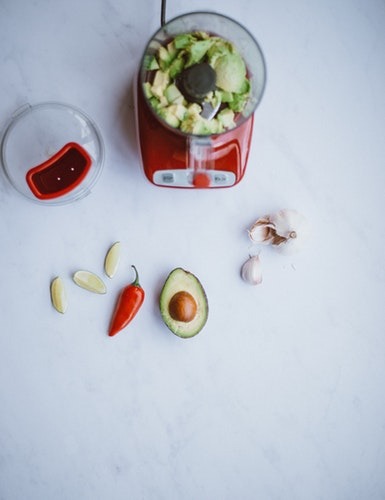Blenders are small and versatile appliances which are part of almost every kitchen. They are very helpful in chopping and blending ingredients to be used in making smoothies and other recipes. But have you experienced your blender not chopping pieces of food you put in it properly? Maybe it’s because the blender could not handle the size of the ingredients or they are too hard for the blender’s blades. Sometimes we use a blender without thinking about how they do the job of cutting down food to size. We just put into different food pieces with different sizes in it hoping they would be chopped in no time. Because of the fast spinning blades, we might think that the blender can cut the food directly with ease. If you’ve been noticing that your blender could not chop some ingredients properly, here are some tips on how to make it work well.
The first stage of blending is cutting, chopping, and smashing the food into finer particles. Most foods have high water and oil content, therefore, the blender is quickly filled with liquid. One important thing to do when blending is reducing the size of the particles. This will help it to work better. The food must be small enough to start flow under the stirring action of the blades.
There are different types of blenders and not all of them are created equal. Some may have greater power compared to other models. This means that what works for one blender may not work for another. For instance, a high speed blender may be able to chop half of an apple easily, but for a less powerful blender, you might need to cut the apple into smaller pieces first. The secret is initially observing how powerful the blender is. If you’ve noticed that it’s having difficulty chopping food pieces, then you need to make the pieces smaller.
For most of the blenders, the right size of food pieces they can handle is bite size or simply the size which is small enough to throw in your mouth comfortably. If your blender will not be able to chop foods this small properly, then its blades should probably be sharpened or your blender might be needing some repair. Always observe how your blender works to avoid overworking it and damaging its gears. Even though you have a heavy duty blender which can chop bigger pieces of food with ease, smaller pieces of foods will help extend its life.
Maybe you’d also think about cutting the pieces of foods into much smaller ones to make the blending easier. However, reducing the size of the ingredients too much is not very helpful because of two reasons. First, as the ingredients shrink in size, the smaller the chance that the blade will hit them. They will become too small to target. Second, the blender uses a lot of energy to chop food into tiny pieces. When the pieces are already reduced into smaller ones, it will take more kinetic energy to break them into much smaller pieces. As a result, the blade will not hit the food hard enough. There isn’t any need to put much effort in chopping the food pieces into much smaller ones because that is what blenders are for after all, right?
Aside from the size of the food pieces, you should also pay attention to the texture and hardness of the ingredients you will be blending. If you will be putting in tougher foods and your blender is not a heavy duty one, you might want to reduce the food pieces into much smaller pieces first. Cutting tougher foods into smaller sizes could be better for your blender than some of the softer ones.
It’s important to know how powerful your blender is, as well as its capacity, to be able to achieve well-chopped fruits and vegetables, and a well-blended smoothie. Not only will it make the chopping and blending easier, it will also help extend the life of the blender and keep it from being damaged. We hope these tips and guidelines help the next time you use your blender to chop foods.

